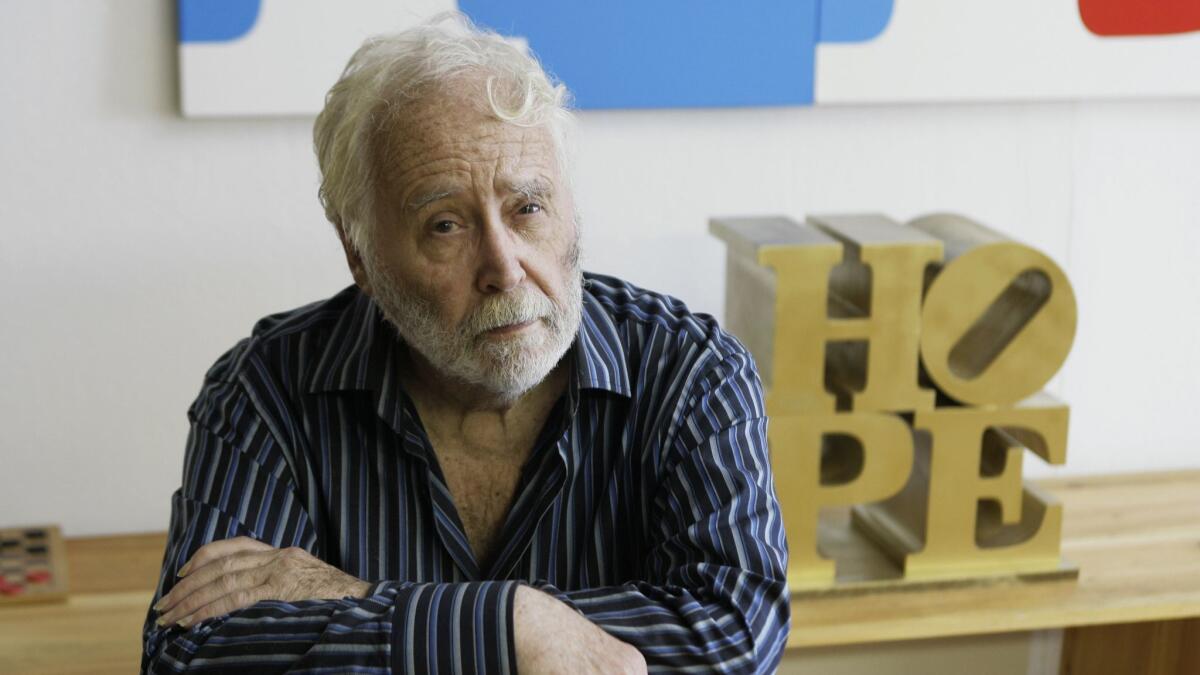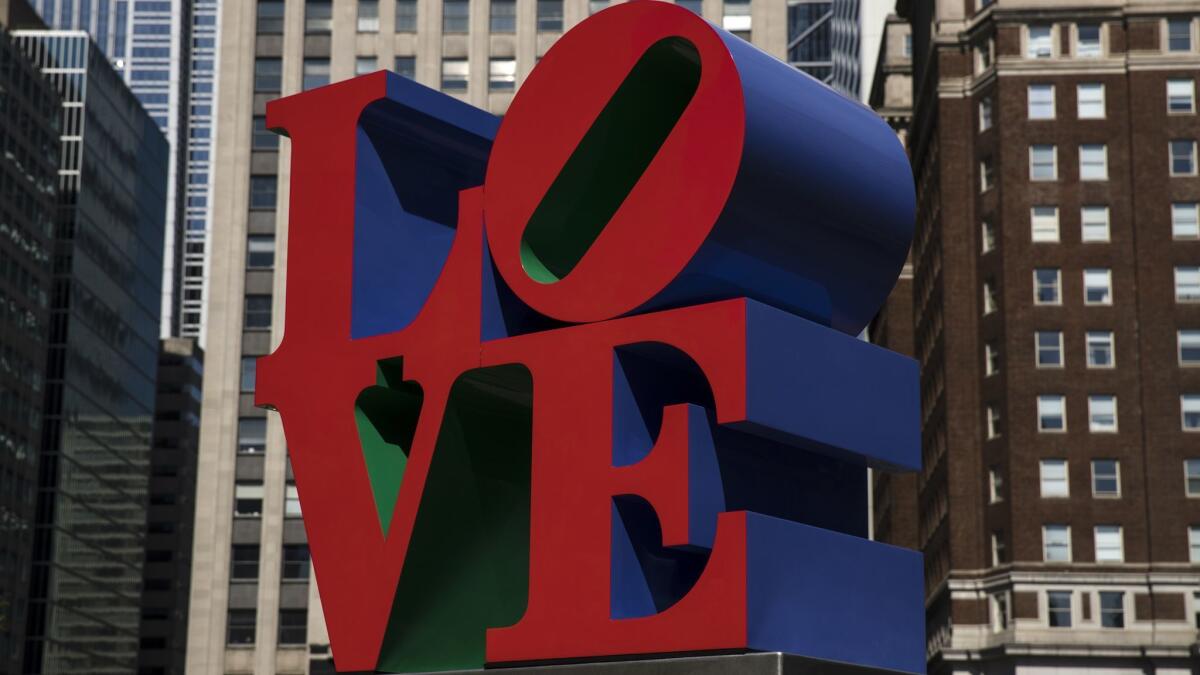Pop artist Robert Indiana, best known for his 1960s ‘LOVE’ series, dies

- Share via
Pop artist Robert Indiana, best known for his 1960s “LOVE” series, died at his secluded island home off the Maine coast having never found the type of lasting love that was celebrated by thousands through his iconic work.
The artist’s endearing image of “LOVE” is instantly recognizable around the world. Couples have their photo taken at the “LOVE” sculpture in Philadelphia, and the iconic image was used on postage stamps.
But the man behind the art grew up in a household where the word “love” was never spoken, and he never found a lasting relationship, said Barbara Haskell, curator of the Whitney Museum of American Art in New York.
“The word was never used in his family growing up. He had a complicated relationship with the word,” Haskell said.
Indiana died Saturday from respiratory failure at his home in a converted Odd Fellows Hall, a fraternal order lodge, on Vinalhaven Island, 15 miles off the mainland, said James Brannan, his attorney. He was 89.
Friends had expressed concern for his well-being because the reclusive artist had not been heard from for some time.
A lawsuit filed in New York City the day before his death suggested he was purposefully isolated by his caretakers.
Brannan declined to comment on the situation.

Indiana created a lifetime of art, but he’s best known for “LOVE,” spelled with two letters to a line and with a tilted “O.” It’s been transformed into sculptures around the world, sometimes in different languages, from Spain to Israel to Japan.
“In some ways he was perhaps seen as the proverbial one-hit wonder because ‘LOVE’ was so immensely iconic and immensely huge in pop culture,” said Dan Mills, the director at Bates College Museum of Art. “For better or for worse, it overshadowed some of his other contributions.”
Haskell compared the image to “American Gothic,” the painting by Grant Wood of a man with a pitchfork and a woman in front of a farmhouse. The public knows those images even if they don’t know the creators, she noted.
Indiana, who was born Robert Clark in the state of Indiana, left behind the art scene in New York and retreated in 1978 to Maine, living on Vinalhaven.
He told the Associated Press in 2009 that he moved to his house — which a benefactor bought for him — when he needed a place to go after his lease ran out on his five-story studio and gallery in the Bowery section of New York City.
His desire for solitude was legendary.
In 2014, he disappointed dozens of fans by failing to make an appearance outside his home for an event dubbed International HOPE Day, which was inspired by his creativity.
Some of his longtime friends became worried about him in recent months.
Kathleen Rogers, a friend and former publicist, said she was so concerned that six to eight weeks ago she contacted the Maine Department of Health and Human Services to investigate.
She said she wants him to be remembered as an eccentric and inspiring artist, not as a man who shut out friends and closed off his studio.
“He was reclusive, cantankerous and sometimes difficult. But he was a very loyal, loving man. He was the architect of love,” she said.
A spokeswoman for the Maine department did not immediately return a message seeking comment.
Although his iconic “LOVE” tended to overshadow everything else, Indiana never stopped producing art. That included fashioning a “HOPE” design, similar to “LOVE,” in honor of former President Obama.
The Whitney Museum of American Art staged a 2013 exhibit, “Robert Indiana: Beyond Love.” In Maine, Mills was inspired by the Whitney’s exhibition to produce a 2016 exhibition, “Robert Indiana: Now and Then.”
In the end, Indiana found love through his art and adoration from the public. But real love, Indiana recognized, was a “dangerous commodity” that can die out and lead to disappointment, Haskell said.
“On one hand he accepted that love became a symbol that brought him international renown,” she said. “But for him love also has this element of fragility and precariousness.”
ALSO
Photographer Laura Aguilar, chronicler of the body and Chicano identity, dies at 58
Dora De Larios, innovative artist known for creating ceramic work that reflected L.A., dies at 84
Ceramic artist Dora De Larios on shaping her own path by melding the Mexican, Japanese and Modern
Damien Hirst’s sharks: From the Met to a Vegas casino bar, artworks swim between the high and low
Brie Ruais puts all of her body weight into each sculpture she makes
More to Read
Start your day right
Sign up for Essential California for the L.A. Times biggest news, features and recommendations in your inbox six days a week.
You may occasionally receive promotional content from the Los Angeles Times.






